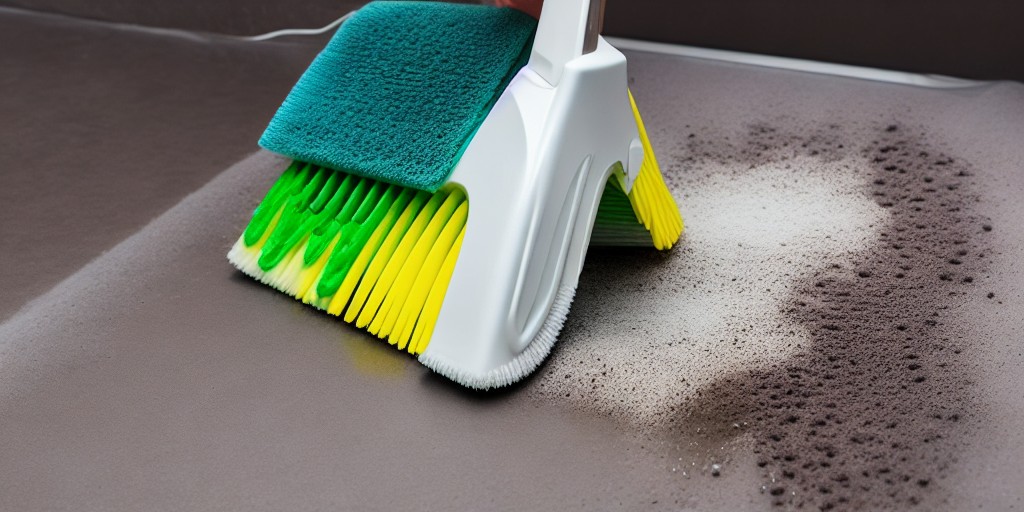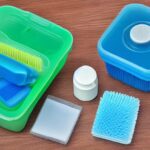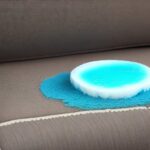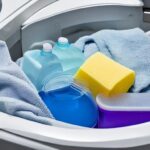Mold is an unsightly and potentially dangerous problem that many homeowners face. Not only does it look unpleasant, but it can also cause respiratory issues and other health problems. As such, it’s crucial to address mold growth as soon as possible. There are many products on the market that claim to clean mold, including Clorox. But can Clorox really clean mold? In this article, we will delve into the science behind mold growth, explore the efficacy of Clorox as a mold cleaner, and provide tips for preventing mold growth in the first place.
Mold is a type of fungus that grows in damp environments. It can be found indoors and outdoors, and it thrives in areas with high humidity and poor ventilation. Mold growth is not only unsightly but can also cause a variety of health problems. There are many products on the market that claim to clean mold, including Clorox. In this article, we will explore whether or not Clorox can effectively clean mold and provide tips for preventing mold growth in the first place.
Understanding Mold Growth
Before we can determine whether Clorox can clean mold, it’s essential to understand how mold grows. Mold spores are everywhere, and they can grow on a variety of surfaces. However, they require moisture to grow and spread. Mold spores can grow on organic materials, such as wood, paper, and fabrics, as well as inorganic materials, such as tile and concrete.
Mold growth can cause a variety of health problems, including respiratory issues, allergic reactions, and skin irritation. In severe cases, it can even cause neurological problems.
What is Clorox?
Clorox is a brand of bleach that has been on the market since 1913. It’s a popular household cleaner that is known for its ability to remove stains and disinfect surfaces. Clorox contains sodium hypochlorite, which is a powerful oxidizing agent that can break down organic matter and kill bacteria and viruses.
How Does Clorox Clean?
Clorox works by breaking down the proteins and other organic matter that make up stains and grime. The sodium hypochlorite in Clorox reacts with the proteins, breaking them down into smaller, water-soluble molecules. This makes it easier to remove stains and dirt from surfaces.
The Efficacy of Clorox on Mold.
While Clorox is a powerful cleaner, it may not be effective at cleaning mold in all cases. The efficacy of Clorox on mold depends on the type of mold and the surface it’s growing on.
Clorox can be effective at removing mold from non-porous surfaces such as tile, glass, and metal. However, it may not be effective at removing mold from porous surfaces such as wood or fabric.
If you’re using Clorox to clean mold, it’s important to note that it may not kill all mold spores. Mold can be difficult to completely eliminate, and it may require multiple cleanings to fully remove.
How to Use Clorox to Clean Mold.
If you decide to use Clorox to clean mold, it’s important to follow the instructions on the label carefully. Here are some general guidelines for using Clorox to clean mold:
Wear Protective Gear: Before you begin cleaning, it’s essential to wear protective gear, such as gloves, goggles, and a mask, to protect yourself from the fumes and any potential health hazards.
Dilute Clorox: Mix 1 cup of Clorox with 1 gallon of water. This dilution will ensure that the bleach is not too strong, which can damage surfaces.
Apply the Solution: Apply the Clorox solution to the affected area using a spray bottle or a sponge. Be sure to cover the area thoroughly and allow the solution to sit for 10-15 minutes.
Scrub the Area: Using a scrub brush, gently scrub the area to remove the mold. Be sure to scrub the area thoroughly, but avoid scrubbing too hard, as this can damage the surface.
Rinse the Area: Once you’ve scrubbed the area, rinse it thoroughly with water to remove any remaining Clorox solution.
Dry the Area: Use a clean towel or a fan to dry the area completely. It’s important to ensure that the area is completely dry to prevent the growth of mold in the future.
Precautions When Using Clorox.
While Clorox can be effective at cleaning mold, it’s essential to take precautions when using it. Here are some tips to keep in mind:
Ventilate the Area: When using Clorox, be sure to open windows and turn on fans to ensure that the area is well-ventilated. The fumes from bleach can be harmful if inhaled in large quantities.
Test the Surface: Before using Clorox on a surface, test it in an inconspicuous area to ensure that it won’t damage the surface.
Don’t Mix with Other Cleaners: Never mix Clorox with other cleaners, as this can create dangerous fumes.
Use in Moderation: While Clorox can be effective at cleaning mold, it’s important to use it in moderation. Overuse of bleach can damage surfaces and make them more susceptible to mold growth in the future.
Other Ways to Prevent Mold Growth.
In addition to using Clorox to clean mold, there are several other ways to prevent mold growth in the first place:
Fix Leaks: Address any leaks in your home promptly to prevent the growth of mold. Leaks can cause moisture to accumulate, which can lead to mold growth.
Improve Ventilation: Ensure that your home is well-ventilated to prevent the buildup of moisture. Open windows and use fans to improve ventilation.
Control Humidity: Use a dehumidifier to control humidity in your home. Keeping humidity levels between 30% and 50% can help prevent the growth of mold.
Clean Regularly: Regular cleaning can help prevent the growth of mold. Be sure to clean bathrooms, kitchens, and other areas prone to moisture regularly.
Use Mold-Resistant Products: Consider using mold-resistant paint and other products in areas prone to mold growth.
Conclusion.
In conclusion, Clorox can be effective at cleaning mold on non-porous surfaces such as tile and metal. However, it may not be effective at cleaning mold on porous surfaces such as wood or fabric. When using Clorox to clean mold, it’s important to follow the instructions on the label carefully and take precautions to protect yourself from fumes. Additionally, there are several other ways to prevent mold growth in the first place, including fixing leaks, improving ventilation, and controlling humidity.
FAQs on Can Clorox Clean Mold?
Is Clorox the only product that can clean mold?
No, there are other products on the market that claim to clean mold, such as vinegar, hydrogen peroxide.
Is Clorox the only product that can clean mold?
No, there are other products on the market that claim to clean mold, such as vinegar, hydrogen peroxide, and borax. However, Clorox is a widely used and effective product for cleaning mold.
Can Clorox be used on all surfaces?
No, Clorox should only be used on non-porous surfaces such as tile and metal. It may not be effective at cleaning mold on porous surfaces such as wood or fabric.
Are there any risks to using Clorox to clean mold?
Yes, the fumes from Clorox can be harmful if inhaled in large quantities. It’s important to wear protective gear and ensure that the area is well-ventilated when using Clorox.
How often should I clean areas prone to mold growth?
It’s recommended to clean areas prone to mold growth, such as bathrooms and kitchens, regularly to prevent the growth of mold.
Can mold-resistant products completely prevent mold growth?
No, mold-resistant products can help prevent mold growth, but they are not a guarantee. It’s still important to address any leaks or moisture issues promptly and clean regularly to prevent the growth of mold.




